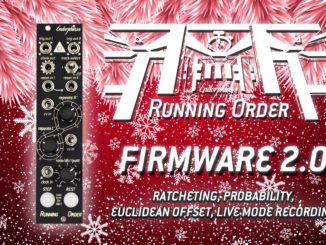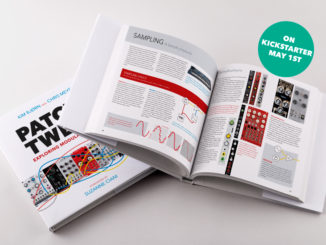Ginkosynthese latest module is called Seeds and is a powerful 8-bit oscillator/synth voice with user-programmable algorithms and a built-in AD envelope.
It comes from Jan Willem of Ginosynthese who is part of the very active Netherland synth community. These are mainly known or their very special products. They do a lot what others don’t dare to do. This applies also this new module. Seeds module is different and can’t be compared to a classic oscillator.
Seeds is 8-bit, can be used as an oscillator but also as a synth voice with multiple algorithms. It uses an Arduino Nano core with an Atmel chip on it. It is exciting that you can also develop own algorithms for it yourself. If you use it as a synth voice, it also offers an AD envelope and modulation that behaves differently with every algorithm.
According to the developer, the idea of this module is based on two points: get unexpected results using modular synths and basic sounds more quickly from one module. The module features the following algorithms:
- (0) The original “Grains” sound. Two triangle-wave formant peaks synced by the main oscillator. The “mod” knob sets a formant peak.
- (1) Triangle wave with wave-wrapping. The “mod” knob sets the amount of wave-wrapping.
- (2) Super-saw, featuring three detuned saw waves with a PWM feature modulated by an LFO.The “Mod” knob controls the LFO rate.
- (3) Classic FM; a “carrier” sine wave phase modulated by a second sine. The “mod” knob sets the modulator wave’s pitch offset.
- (4) Saw-wave with hard-sync.
- (5) Phase-distortion
- (6) Tuned noise
- (7) Square wave with pulse-width modulation and build in LFO. The “mod” knob controls the LFO rate.
testing the most fresh firmware of the SEEDS (firmware made by Kassen). The SEEDS is available in about one hour from now from my website. The firmware will have some minor updates every now and then the next weeks, but you only need USB to update it.Philosophy/RationaleProbably the most interesting thing about modular synthesizers is how we can try new things and get unexpected results. This is especially nice in live improvisations, but modular synthesizers can be a bit slow, there. Patching up about four or five modules to get a simple melodic sound takes a lot of time when you have a musical idea right now it would be nice to get a basic sound more quickly, that you could then extend.Another question is where one would start setting up a modular system. It would be nice to be able to get a single module that can createan interesting sound that any other module could add something useful to. From both of those perspectives the Seeds should make sense, at least to some people.On the sound-design side you might notice some 90's popular music influences.There are two reasons for that. First of all; those sounds are a natural match for the rather modest (8 bit, 16MHz) Atmel chip on the Arduino Nano we're using. That music was made using digital synthesizers using the processors available at the time, and those had to make the most of the chips available at the time, which were quite comparable to the Nano. The second reason is that those sounds are a lot of fun. Once that link became clear it became more a of a guiding principle than a potential problem; it seems more sensible to lean into such links than it is to resist them.
Gepostet von Jan Willem am Sonntag, 24. November 2019
Ginkosynthese Seeds is available now as a DIY kit for 90€.
More information here: Ginkosynthese





Be the first to comment